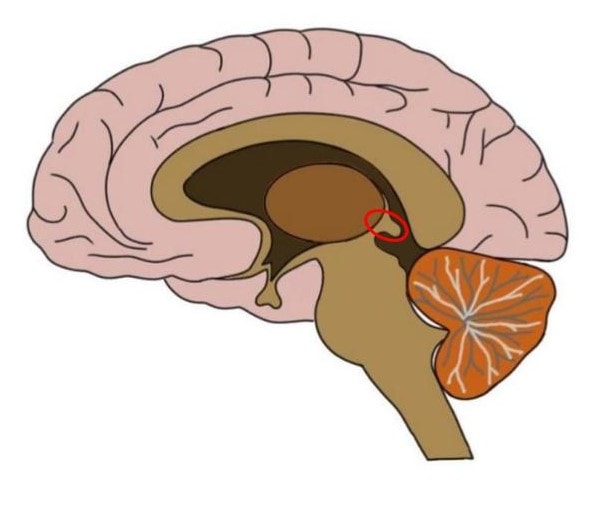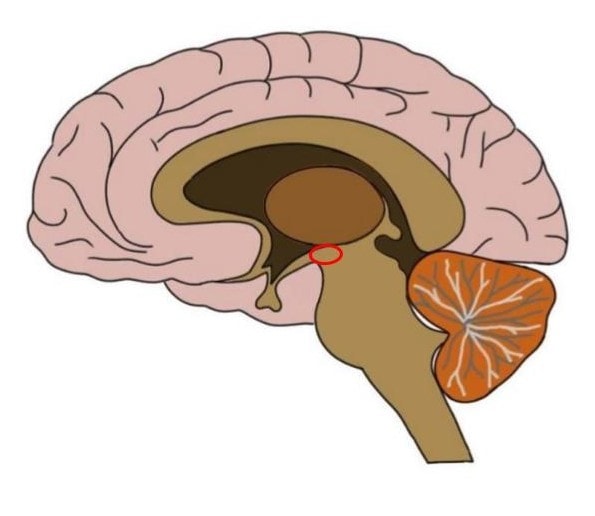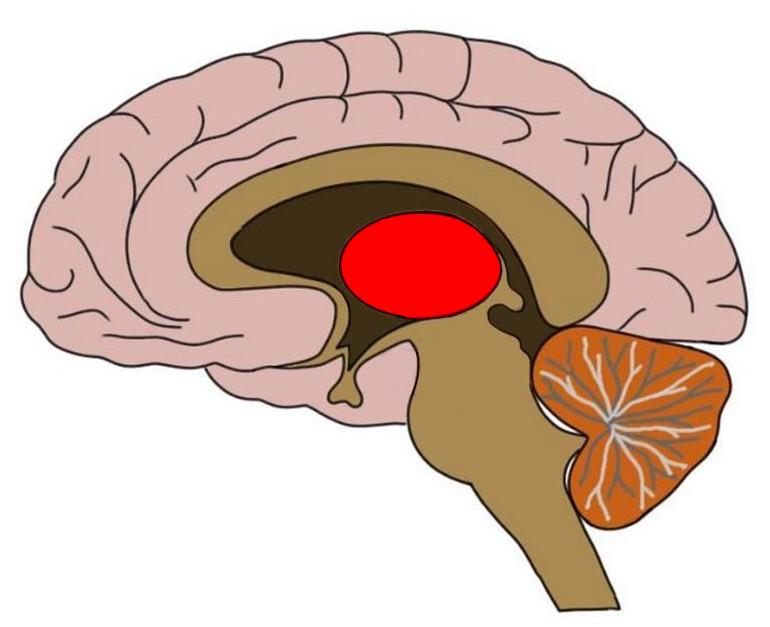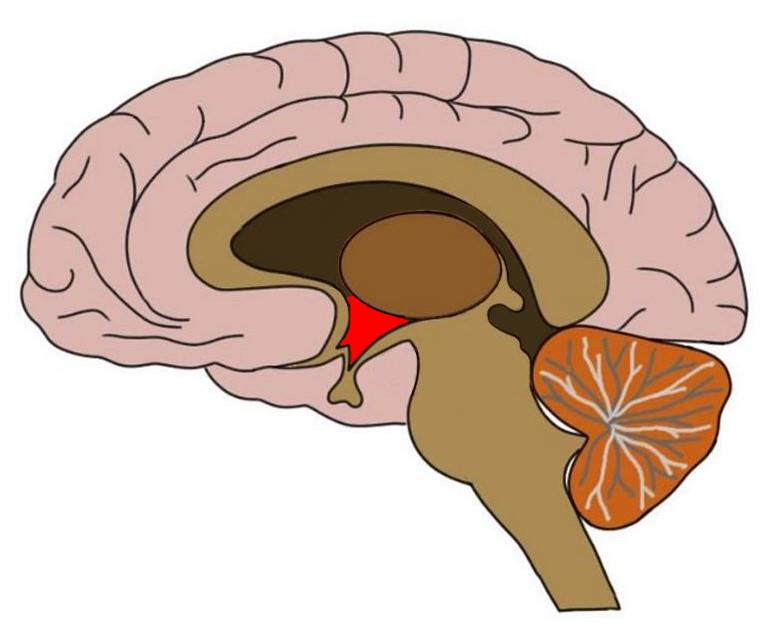Know Your Brain: Diencephalon
Where is the diencephalon?
The diencephalon is a small part of the brain that is mostly hidden from view when you are looking at the outside of the brain. It is divided into four parts: the epithalamus, thalamus, subthalamus, and hypothalamus. The diencephalon can be found just above the brainstem between the cerebral hemispheres; it forms the walls of the third ventricle. The only part of the diencephalon that can be seen without taking a cross-section of the brain is the bottom-most portion of the hypothalamus.
What is the diencephalon and what does it do?
Despite being a relatively small part of the central nervous system in terms of mass, the diencephalon plays a number of critical roles in healthy brain and bodily function. Because it consists of a collection of structures, though, it would not make sense to try to define the functions of the diencephalon with one summary. Instead, I'll briefly touch on the roles of each of its sub-components, although it's important to realize that even these summaries will (by necessity) be simplified.
Epithalamus

The epithalamus consists primarily of the pineal gland and the habenulae. The pineal gland is an endocrine gland that secretes the hormone melatonin, which is thought to play an important role in the regulation of circadian rhythms. To learn more about the pineal gland, read this Know Your Brain article.
The habenulae (more often referred to with the singular: habenula) are two small areas near the pineal gland. The functions of the habenula are poorly understood, but it is thought to potentially be involved with reward processing and has been implicated in depression. Additionally, there is some evidence that the habenula also produces melatonin, and that it might be involved with sleep regulation. To learn more about the habenula, read this Know Your Brain article.
Subthalamus

A portion of the subthalamus is made up of tissue from the midbrain extending into the diencephalon. Thus, parts of midbrain regions like the substantia nigra and red nucleus are found in the diencephalon. The subthalamus is also home to the subthalamic nucleus and the zona incerta. The subthalamic nucleus is densely interconnected with the basal ganglia, and plays a role in modulating movement. The zona incerta has many connections throughout the cortex and spinal cord, but its function is still not determined. Several collections of important fibers (e.g., somatosensory fibers) also pass through the subthalamus.
Thalamus

The thalami (more frequently referred to with the singular: thalamus) consist of two oval collections of nuclei that make up most of the mass of the diencephalon. The thalamus is often described as a relay station because almost all sensory information (with the exception of smell) that proceeds to the cortex first stops in the thalamus before being sent on to its destination. The structure is subdivided into a number of nuclei that possess functional specializations for dealing with particular types of information. Sensory information thus travels to the thalamus and is routed to a nucleus tailored to dealing with that type of sensory data. Then, the information is sent from that nucleus to the appropriate area in the cortex where it is further processed.
The thalamus doesn't deal just with sensory information, however. It also receives a great deal of information from the cerebral cortex, and it is involved with processing that information and sending it back to other areas of the brain. Due to its involvement in these complex networks, the thalamus plays a role in a number of important functions ranging from sleep to consciousness. To learn more about the thalamus, read this Know Your Brain article.
Hypothalamus

The hypothalamus is a small (about the size of an almond) region located directly above the brainstem. It also is made up of a collection of nuclei that are involved in a variety of functions. The hypothalamus is often linked, however, to two main roles: maintaining homeostasis and regulating hormone release.
Homeostasis is the maintenance of equilibrium in a system like the human body. Optimal biological function is facilitated by keeping things like body temperature, blood pressure, and caloric intake/expenditure at a fairly constant level. The hypothalamus receives a steady stream of information about these types of factors. When it recognizes an unanticipated imbalance, it enacts a mechanism to rectify that disparity.
The hypothalamus acts to maintain homeostasis---and influences behavior in general---by regulating hormone secretion. This is primarily done through the control of hormone release from the pituitary gland. Through this mechanism, the hypothalamus has widespread effects on the body and behavior. It is often said that the hypothalamus is responsible for the four Fs: fighting, fleeing, feeding, and fornication. Clearly, due to the frequency and significance of these behaviors, the hypothalamus is extremely important in everyday life. To learn more about the hypothalamus, read this Know Your Brain article.
References:
Vanderah TW, Gould DJ. Nolte's The Human Brain. 7th ed. Philadelphia, PA: Elsevier; 2016.


